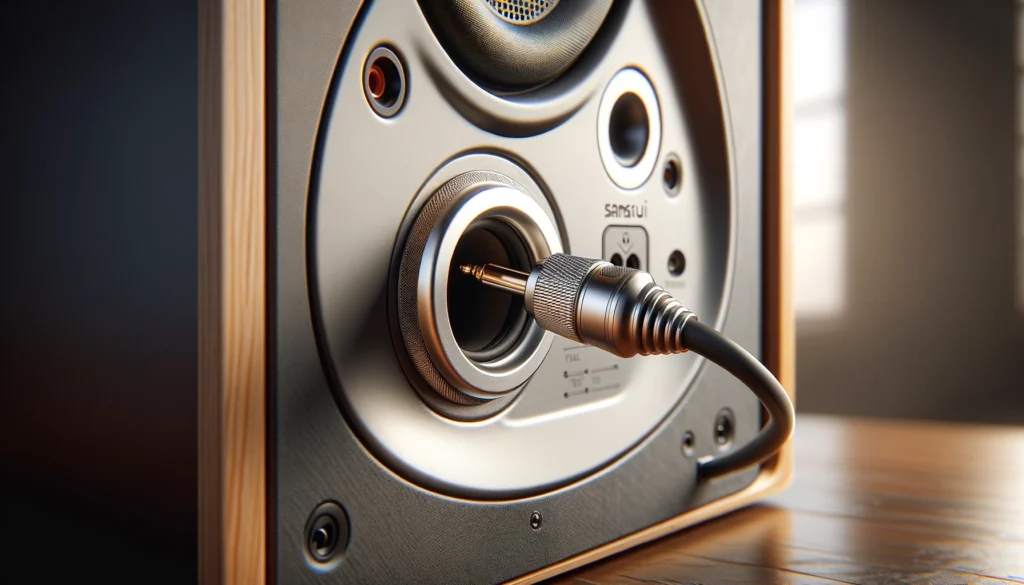If you’ve ever wondered, “Can you use a port plug in a Sansui SP-1500?” you’re not alone. It’s a common question among audiophiles and vintage speaker enthusiasts who want to tweak their sound.
Let’s dive into the details and clear up the confusion.
Understanding the Sansui SP-1500 Speakers
Before we get into the specifics of port plugs, let’s talk about the Sansui SP-1500 speakers. These are classic vintage speakers from the 1970s, known for their large size and impressive sound quality. They feature a rear-firing port that helps with bass extension.
But, like any speaker with a port, you might wonder if it’s okay to block that port. That’s where the port plug comes into play.
What is a Port Plug?
A port plug is a device used to block or seal the bass port of a speaker. This is typically done to alter the sound characteristics, particularly the bass response.
Some people use port plugs to tighten up the bass or reduce unwanted resonance. It’s a common trick used by audiophiles who want to customize the sound of their speakers.
Can You Use a Port Plug in a Sansui SP-1500?
Yes, you can use a port plug in a Sansui SP-1500, but whether you should depends on what you’re aiming for with your sound.
When to Use a Port Plug in the SP-1500
- Bass Control: If you find the bass too boomy or overwhelming, a port plug can help tighten things up. By blocking the port, you reduce the low-end resonance, making the bass more controlled and less muddy.
- Room Acoustics: Some rooms may amplify bass frequencies too much, making the sound less clear. A port plug can help balance things out by limiting the amount of bass that comes through the port.
- Experimenting with Sound: Audiophiles often use port plugs to experiment with different sound profiles. If you’re looking to fine-tune your setup, it’s worth trying a port plug to see if it improves the listening experience.
When Not to Use a Port Plug in the SP-1500
- Lack of Bass: If you’re after deep, rich bass, plugging the port might not be the best option. The Sansui SP-1500’s design is intended to provide solid bass extension through its port. Blocking it could result in a thinner, less satisfying bass response.
- Sound Loss: The port helps with overall speaker efficiency, so blocking it may cause a slight drop in the overall sound pressure level, particularly in the lower frequencies.
How Does a Port Plug Affect Sound Quality?
When you use a port plug in the Sansui SP-1500, the bass frequencies will be affected.
- Reduced Bass Extension: The port helps to extend the low-end frequencies. Blocking it with a port plug will cut off some of that extension, which can result in a tighter, less boomy bass but also a reduction in deep bass output.
- Tighter Sound: The main benefit of using a port plug is a tighter bass. If you feel like your speakers are producing too much bass, especially in smaller rooms, a port plug can make the sound more focused and controlled.
- Midrange Clarity: Some users report that plugging the port can improve midrange clarity, as the bass is less dominant. This can be particularly helpful if you’re using the speakers for more intricate music genres like jazz or acoustic.
How to Use a Port Plug with the Sansui SP-1500
Using a port plug with your Sansui SP-1500 is straightforward. Here’s how you can do it:
- Buy the Right Size Port Plug: Make sure you get a plug that fits the size of the port on your SP-1500. You can find port plugs online or at audio equipment stores. Some people even make their own plugs from foam or rubber.
- Insert the Plug into the Port: Gently insert the plug into the rear-firing port. It should fit snugly to effectively block the airflow.
- Test the Sound: After inserting the plug, play some music through the speakers and listen carefully. You’ll likely notice a change in the bass response. If you like the new sound, keep the plug in. If not, simply remove it and enjoy the original sound.
Pros and Cons of Using a Port Plug
Pros:
- Tightens Bass: If your room is too bass-heavy or the sound is too boomy, a port plug can help tighten up the low end.
- Improves Clarity: It can make midrange frequencies more pronounced, helping vocals and instruments stand out more.
- Customizable Sound: Port plugs allow you to experiment with your speakers and create a sound profile that suits your tastes.
Cons:
- Reduced Bass Extension: Blocking the port will result in a reduction of deep bass, which might not be ideal for bass-heavy music genres.
- Less Efficiency: The port helps with speaker efficiency, so plugging it could slightly reduce overall output, especially in the lower frequencies.
Should You Use a Port Plug in Your Sansui SP-1500?
Ultimately, whether or not you use a port plug in your Sansui SP-1500 depends on your personal preferences and the acoustics of your space.
If you’re looking for a more controlled bass response or need to tame an overly boomy sound, a port plug could be a great solution.
But if you’re after that full, rich bass extension, leaving the port open is probably the better choice.
FAQs About Port Plugs and the Sansui SP-1500
1. Can a port plug damage my Sansui SP-1500 speakers? No, using a port plug won’t damage your speakers. It’s simply a way to adjust the sound. Just make sure the plug fits properly and doesn’t block any ventilation.
2. How does a port plug affect different music genres? The effect of a port plug depends on the music you’re listening to. For genres like rock or hip-hop, where bass is crucial, plugging the port might reduce the impact. For genres like classical or jazz, you might appreciate the tighter, clearer sound.
3. Can I use a port plug in any speaker? Port plugs can be used in most ported speakers, but the results will vary depending on the design of the speaker. Always experiment to see what works best for your setup.
Final Thoughts
So, can you use a port plug in a Sansui SP-1500? Absolutely. It’s a simple tweak that can change how your speakers sound. Whether you want to control the bass or experiment with a new sound, a port plug offers a customizable solution.
Give it a try and see if it works for you.



